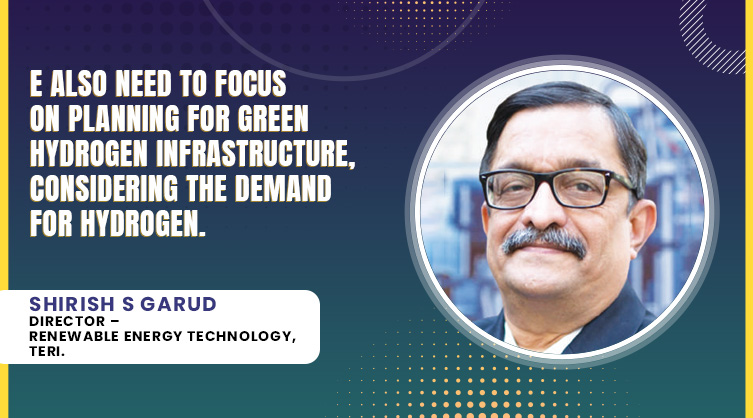Target: 40-50 GW of new capacity annually must be achieved
By EPR Magazine Editorial April 26, 2023 6:53 pm IST
By EPR Magazine Editorial April 26, 2023 6:53 pm IST

The government has created new avenues to sell renewable power through market mechanisms and reduce dependency on DISCOMs, says Shirish S Garud, Director of Renewable Energy Technology, TERI.
Industrialisation and urbanisation will boost energy consumption, which is expected to reach 405 GW of renewable energy capacity by 2030. How will we fulfil this need without further destabilising the economy?
A renewable energy generation expansion plan for 2030 is already in place, but the timely execution of the projects is a major challenge. We need between 40-50 GW of new capacity addition per year. Different market mechanisms and tools for renewable power sale and purchase will be key for speeding up the processes. The government has now announced a policy for uniform green tariffs, which is a welcome step. Attracting international finances is also important for the timely execution of the projects.
The government’s initiatives to expedite solar power adoption in the country will raise the stakes in generating energy security. How are we faring in this regard?
We are fairly on track. The government has also opened new avenues to sell renewable power through market mechanisms, thus reducing dependency on DISCOMs to sell power. Over time, we are focusing on local manufacturing as well. The PLI scheme for PV modules, cells, and wafers is encouraging for investors and project developers. India is attracting the latest technologies and manufacturing facilities to be competitive in global markets.
Although India’s green energy generation is still in its early stages, we are well-positioned to become a worldwide leader in renewable batteries and green hydrogen. What network infrastructure and supply chain infrastructure is necessary to provide easy transportation?
A strong transmission network for electricity supply to every corner of the country is required. CEA (Central Electricity Authority) has already published its plan to develop a transmission network to absorb over 500 GW of renewable energy by 2030. We also need to focus on planning for green hydrogen infrastructure, considering the demand for hydrogen. Currently, barring the fertiliser and refinery industries, hydrogen demand is non-existent. All other sectoral demands are to be planned. Planning of supply chain infrastructure for hydrogen and renewable power is important in this context.The national hydrogen mission will help enhance our energy industry while advancing our climate goals. What are the long-term benefits of lowering our imports for us?
This year until February end, India has imported USD 171226 billion worth of crude oil and petroleum products. Lowering our imports will help us divert funds to capital investments in the renewable energy and hydrogen sector. In the long term, we will see the cascading impact of these investments in industries and infrastructure, enhancing employment in India.
This again mandates energy storage requirements. What measures are taken by the government and the industries to promote the energy storage market to meet these power distribution demands?
The government has announced a tender for hybrid renewable projects supplemented by storage. About 40 MW of battery storage capacity is currently installed, and about 2 GW capacity is in planning. The storage market is developing. The government is also focusing on developing pumped hydro storage projects, which have better returns on a life cycle cost basis.
We use cookies to personalize your experience. By continuing to visit this website you agree to our Terms & Conditions, Privacy Policy and Cookie Policy.